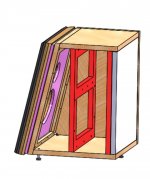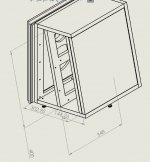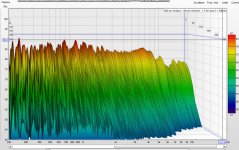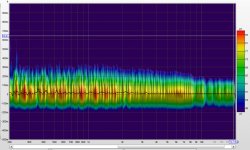It could be cone breakup (the 2k dip). But once that occurs, irregularities in the response rule. This measurement shows a dip, followed by a rather clean response higher up the frequency range. Strange indeed. The fact that the dip persists off-axis would indicate it is not diffraction-induced cancelling.
@ OP, how is the mid enclosure constructed? Which internal dimensions, what damping (acoustic stuffing) is applied? Are you able to produce CSD or BD plots? Were the impedance measurements done in free air or in the enclosure?
The impedance measurements are done in the box. not free air.
The box is fill with polyfill. not to heavily.
I will upload the plots later
Thanks
Attachments
It could be cone breakup (the 2k dip). But once that occurs, irregularities in the response rule. This measurement shows a dip, followed by a rather clean response higher up the frequency range. Strange indeed. The fact that the dip persists off-axis would indicate it is not diffraction-induced cancelling.
@ OP, how is the mid enclosure constructed? Which internal dimensions, what damping (acoustic stuffing) is applied? Are you able to produce CSD or BD plots? Were the impedance measurements done in free air or in the enclosure?
Ran, try put the naked driver on the bench and run a measurement, if the dip still exists then it's most probably related to the driver itself and other variables can be ruled out.
Thanks
I will do it also



